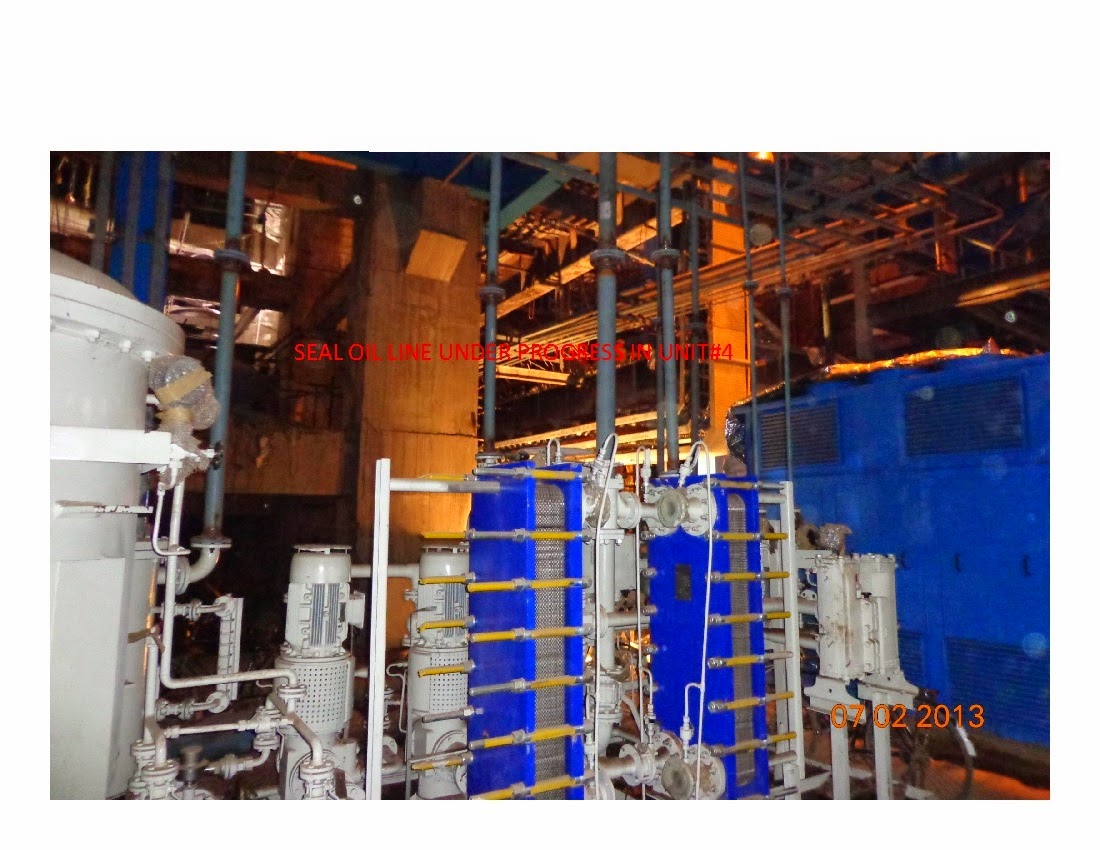PART-II
OIL SUPPLY DATA FOR A TYPICAL 500MW SET MANUFACTURED BY
BHEL
MAIN OIL TANK, RATED CAPACITY: 25/40 Cu . M
Ist OIL FILLING (ESTIMATED): 47.5 Cu . M
FLUSHING OIL QUANTITY (ESTIMATED): 28.5 Cu . M
OIL TEMP. AT COOLER OUTLET, 38 TO 45 DEG C.
TEMP. RISE OF OIL IN BEARINGS 20 TO 25 DEG C
OIL PUMPS
M.O. PUMP A.O. PUMP E.O. PUMP J.O.PUMP
1 2 1 AC
: 2 DC : 1
CAPACITY
(RATED)
75 89.25 30 1.53
dm3/s
DISCHARGE
PRESSURE (GAUGE)
8.6 6.2 2.3 178 BAR
SPEED
50 24.75 24.3 49.42 /s
A
Few erection points need to be remembered during erection of Lube line of
turbine
1. Lube system includes jacking oil line. Jacking oil is used
to lift rotor from bearing
during starting .
2. As these lines requires lot of small items including
fastners , o-ring , gasket, small
bore pipes , prefabricated pipes, valves
,supports etc a systematic material
management is required to reduce the time cycle. No pipes to be kept open at
the end.
All pipes to be cleaned by compressed air before erection.
3. To start the work oil canal and oil room front
availability is must.
4. All the pipelines joints small bore / large diameter
should be tig welded in root.
5. Temporary pipes required for oil flushing to be made
during erection itself so that
last minute fabrication is not necessary.
6. Match up, weld and examine the prefabricated connecting
pieces of the discharge
and suction nozzles prior to the final erection of the
first bearing pedestal.
7. Other matching and welding work to be done when the
bearing pedestal is full
assembled.
8. The direction of flow of the oil temperature control valve
should be ensured as
indicated by markings on the valve itself.
Jacking Oil Lines
9. Once the line has been welded to the bearing pedestal,
fit a protection plate to
protect the line in this area.
10. Ensure that oil vapor extraction lines are laid with a
gradient descending constancy
towards the main oil tank without low points. A
drain loop at the lower end of this line
upstream from the blowers return
drains to the oil tank.
11. To avoid fire hazards, do not route oil lines near lines
or components at high
temperature.
Oil tank with pump motor on the top.
Typcal 500MW lub oil scheme is given above ( BHEL make sets)
P.S If you are looking to earn few extra money from the comfort of your home then please click on the link given below
LINK 1 - PLEASE CLICK HERE
LINK 2 - PLEASE CLICK HERE
P.S If you are looking to earn few extra money from the comfort of your home then please click on the link given below
LINK 1 - PLEASE CLICK HERE
LINK 2 - PLEASE CLICK HERE








